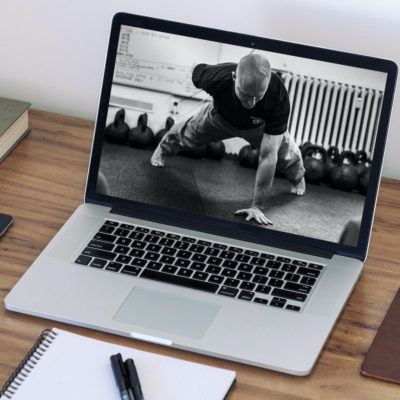![Lying Down and Getting Up with a Barbell [1916]](https://simplexstrong.com/wp-content/uploads/2024/11/dumbbell-gert-up-lebedev-eavy-athletics.jpg)
This movement develops an athlete’s agility and flexibility and, at the same time, teaches them to maintain balance. It is performed as follows:
While holding a barbell with an extended arm above the head, lower yourself onto the opposite knee, using the palm of your free hand for support on the floor. Then, move from the palm to the elbow, simultaneously straightening the leg on the same side along the floor, while the other leg remains bent at the knee. Next, lower yourself from the elbow to the floor with both shoulder blades touching and stretch out both legs, keeping the barbell held with the extended arm.
![Arthur Saxon’s Dumbbell Overhead Swing Tutorials [1905 and 1908]](https://simplexstrong.com/wp-content/uploads/2024/07/arthur-saxon-dumbbell-swing.jpg)
In swinging the dumbbell, the weight must be placed between the feet. The body then bends over from the waist, and a grip is taken of the bell close to the front sphere or disc. The bell may be rested on its end prior to swinging, and the disengaged hand should be pressed on the corresponding knee.

I have done a kind of half Military, half Side Press, during my public appearances. As a rule, this has been the most popular feat of strength that I do. I first started including it because it was a convenient thing to include since I could write ahead for the weights that I needed and take along a bar that was suitable for loading the plates on. I have a bar that is collapsible and can be put in a small briefcase. It is also convenient because it does not take up much room in a church sanctuary, where I often do several feats of strength along with my messages.

Note that although the bells are held close to the shoulders, no support is afforded by the latter. Sometimes the dumb-bells are tipped so that the rear ends rest on the shoulders, but this is not recommended, as in most instances it results in a distortion of posture.
![Lying Down and Getting Up with a Barbell [1916]](https://simplexstrong.com/wp-content/uploads/2024/11/dumbbell-gert-up-lebedev-eavy-athletics.jpg)
![Siegmund Klein’s „The One Best Exercise“ – and Challenge! [1939]](https://simplexstrong.com/wp-content/uploads/2024/09/siegmund-klein-dumbbell-clean-and-press-challenge.jpg)
![Arthur Saxon’s Dumbbell Overhead Swing Tutorials [1905 and 1908]](https://simplexstrong.com/wp-content/uploads/2024/07/arthur-saxon-dumbbell-swing.jpg)














